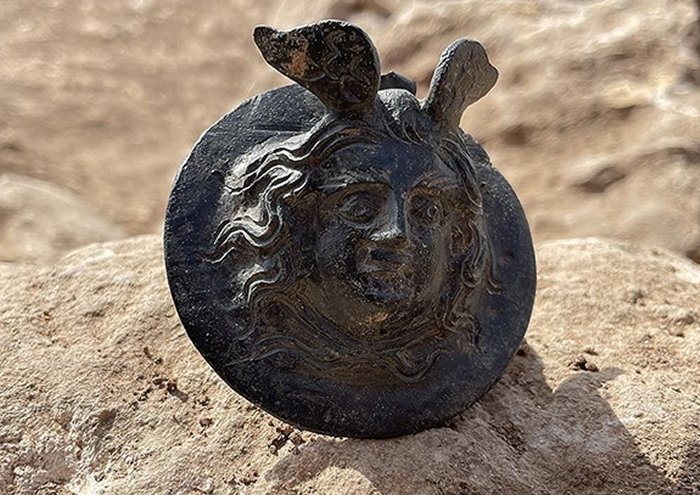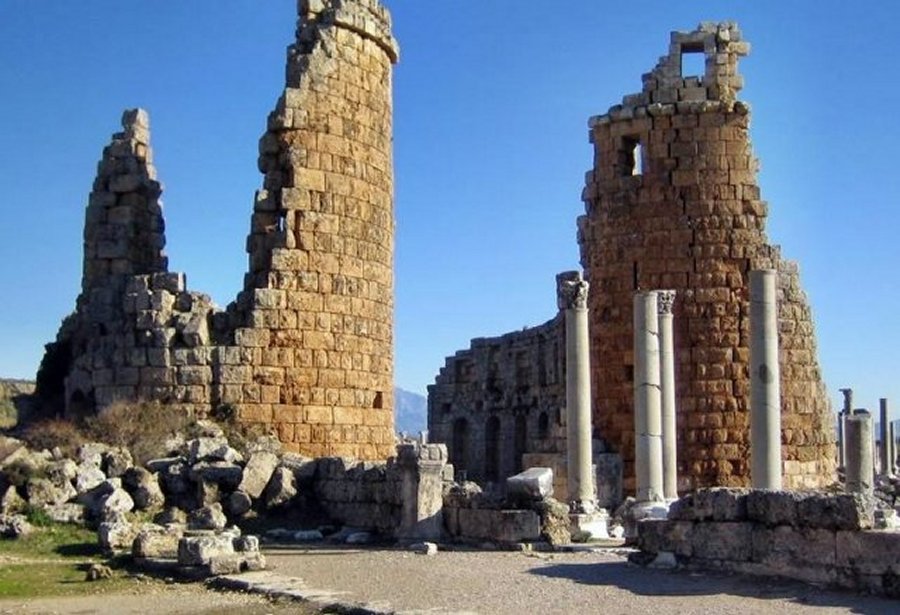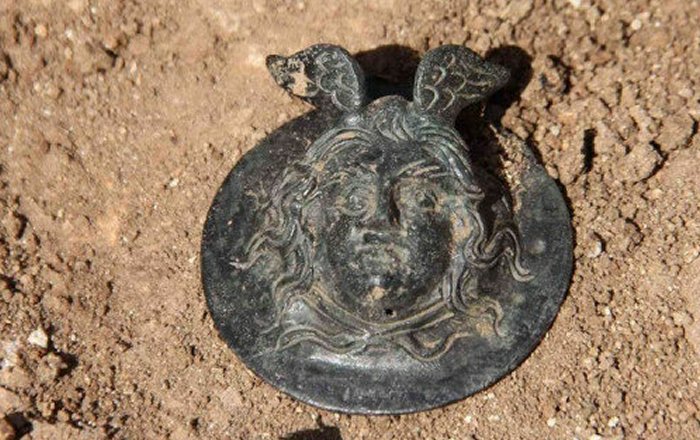Conny Waters – AncientPages.com – Archaeologists announce an interesting discovery of a 1,800-year-old bronze medal bearing a Medusa head. In Greek mythology, a monster was also called Gorgo, and eye c0ntact with it would turn one immediately to stone.

Ancient medal depicting Medusa, a monster in the form of a woman with snakes for hair, the very sight of her eye, which would turn a person to stone. Image credit: Anadoly Agency
The medal has been unearthed in the city of Perge (Perrhe), once a major city of the ancient Greco-Iranian kingdom of Commagene, located in southeastern Anatolia.
According to Mehmet Alkan, director of the Adiyaman Museum, the medal was probably given to a brave soldier.

Ruins of Perge city. Image credit: AA
Alkan also added that the archaeologists continue the excavations in the area of Perrhe, and their work particularly focuse on mosaics in the section called the “infinity ladder.”
Mosaics unearthed in the ancient city of Perrhe (Perge) in the southern province of Antalya are known as “Turkey’s second Zeugma” for their very attractive appearance.

Image credit: AA
Written by Conny Waters – AncientPages.com Staff Writer





